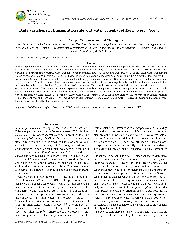摘要
Plant transpiration rate and water potential daily variation are critical elements for not only the study of plant water transportation mechanism, but also for forest restoration and regional water resources management. A field study was conducted in June to October of 2011 to analyse daily variations in the transpiration rate and water potential of Robinia pseudoacacia. The variations in transpiration rate and root/leaf water potential were measured at 2-hour intervals, from 8: 00 to 18: 00. Changes in transpiration rate and root/leaf water potential in different months, under different soil water content (2, 5 and 20 days after watering) and weather (clear-sky, light-cloud and overcast) conditions were analyzed and the environmental impacts discussed. The study showed that transpiration rate and root/leaf water potential were significantly correlated with environmental factors such as solar radiation, relative humidity and air and soil temperature. The transpiration rate and root/leaf water potential difference were also significantly correlated. The daily variation in transpiration rate and root/leaf water potential showed the opposite curve trends. Analysis of daily average, minimum, maximum and the difference between daily maximum and minimum suggested that transpiration rate and root/leaf water potential varied significantly with months, soil water and weather conditions. These results add to our understanding of the water transportation mechanism of Soil-Plant-Atmosphere Continuum (SPAC), which was critical for forest restoration and rational water resources utilization and management for the millions of people in the study area and beyond.
- 出版日期2013
- 单位中国科学院遗传与发育生物学研究所农业资源研究中心; 中国科学院大学
